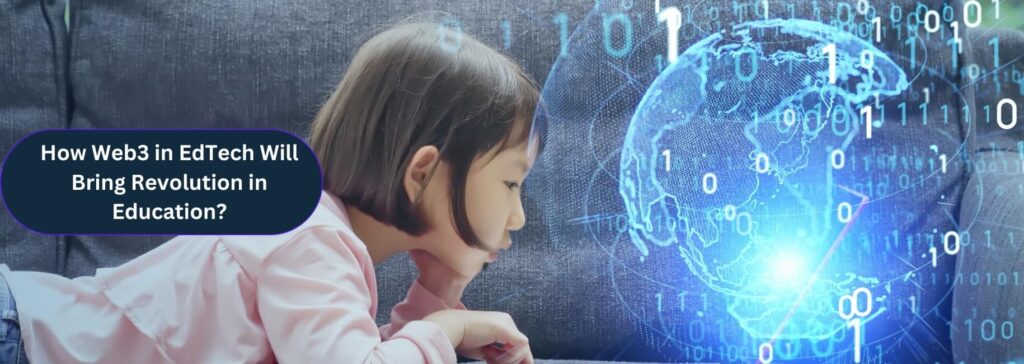Web3 is like the upgrade to the internet, with better security and control for users. It’s bringing big changes to education with technology.
Web3, the third generation of the internet, infuses traditional learning with the power of blockchain, decentralized finance, and a user-owned structure.
Instead of being stuck in one classroom, students could learn from anywhere, and they get to keep their school records safe and sound. This isn’t just something to consider for the future; it’s happening now.
In fact, studies show that using this new tech in schools could grow really fast, by more than 65% in just a few years. That’s a huge deal and shows us that Web3, the way of learning, is here to stay.
In this guide, we’ll look at what happens when Web3 meets education. We’ll see how web3 in EdTech can make learning more personal, giving students more say over their fractionalized information.
Contents
- 1 Challenges In Current Education
- 2 What is EdTech?
- 3 What Does Web3 in EdTech Look Like?
- 4 Where Does Web3 in EdTech Stand Today, and Why Does Web3 Matter?
- 5 How Does Web3 Benefit the EdTech Space?
- 5.1 Personalized Learning Paths
- 5.2 Ownership of Educational Content
- 5.3 Enhanced Security
- 5.4 Improved Collaboration
- 5.5 Streamlined Administration
- 5.6 Transparent Credential Verification
- 5.7 Incentivization through Tokens
- 5.8 Access to Global Marketplaces
- 5.9 Reduced Costs
- 5.10 Continuous Innovation
- 5.11 Democratization of Education
- 5.12 Sovereignty Over Learning Experience
- 5.13 Lifelong Learning Records
- 5.14 Enhanced Online Testing
- 6 How can Web3 in Education Embrace the Move to Ed3?
- 6.1 Decentralized Classrooms Create Equality
- 6.2 Ownership of Data Empowers Students
- 6.3 Teachers Become Global Educators
- 6.4 Learning Becomes Interactive and Immersive
- 6.5 Micro-Credentials Offer Flexibility
- 6.6 Smart Contracts Streamline Administration
- 6.7 Peer-to-Peer Learning Enhances Collaboration
- 6.8 Global Access to Educational Resources
- 6.9 Transparent Accreditation Builds Trust
- 6.10 Lifelong learning Becomes a Digital Journey
- 6.11 Customized Learning Paths Respect Individuality
- 6.12 Educational Economies Reward Participation
- 6.13 Education Without Borders
- 6.14 Sustainability Through Technology
- 7 How Will Web3 in EdTech Impact Traditional Education?
- 8 End Note
- 9 Frequently Asked Questions
Challenges In Current Education
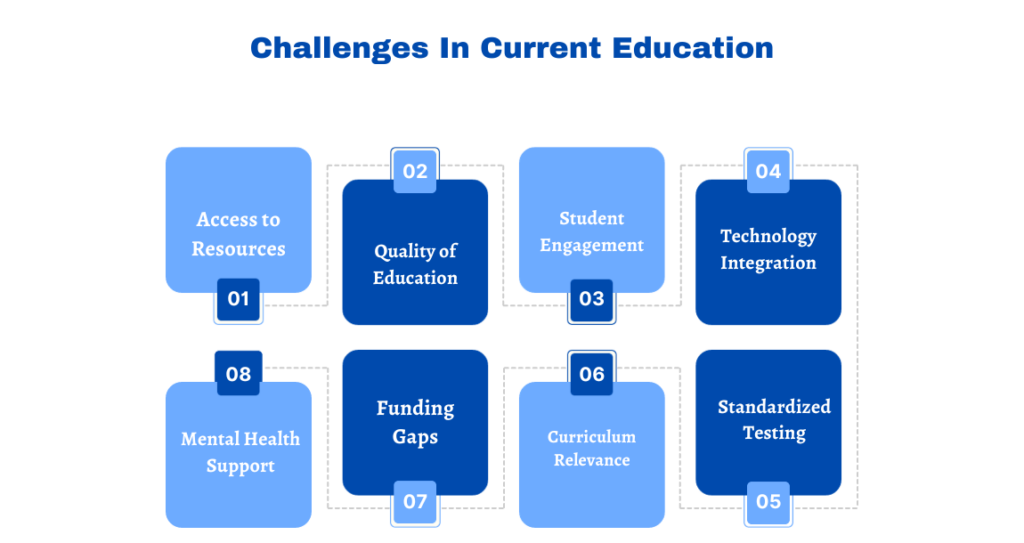
Challenges in current education span various dimensions, from access to technology to pedagogical effectiveness. Here are some of the specific challenges faced by students and educators alike:
Access to Resources
Many students lack access to essential learning materials. Books and digital devices remain out of reach for some.
Quality of Education
Education varies significantly across different regions and schools. Teachers often grapple with large class sizes and limited support.
Student Engagement
Keeping students engaged is a constant battle. Traditional teaching methods may not resonate with all learners.
Technology Integration
Incorporating technology effectively into classrooms is still a hurdle for many educational institutions.
Standardized Testing
Reliance on standardized testing often limits the scope of learning and teaching to a narrow focus.
Curriculum Relevance
Curriculums can be outdated, failing to prepare students for today’s job market or to foster critical thinking skills.
Funding Gaps
Many schools suffer from inadequate funding, affecting everything from facilities to teacher salaries.
Mental Health Support
Schools are increasingly recognized as vital in supporting student mental health, yet resources are often insufficient. Shifting the focus to EdTech, it’s vital to understand its role in addressing some of these challenges.
What is EdTech?
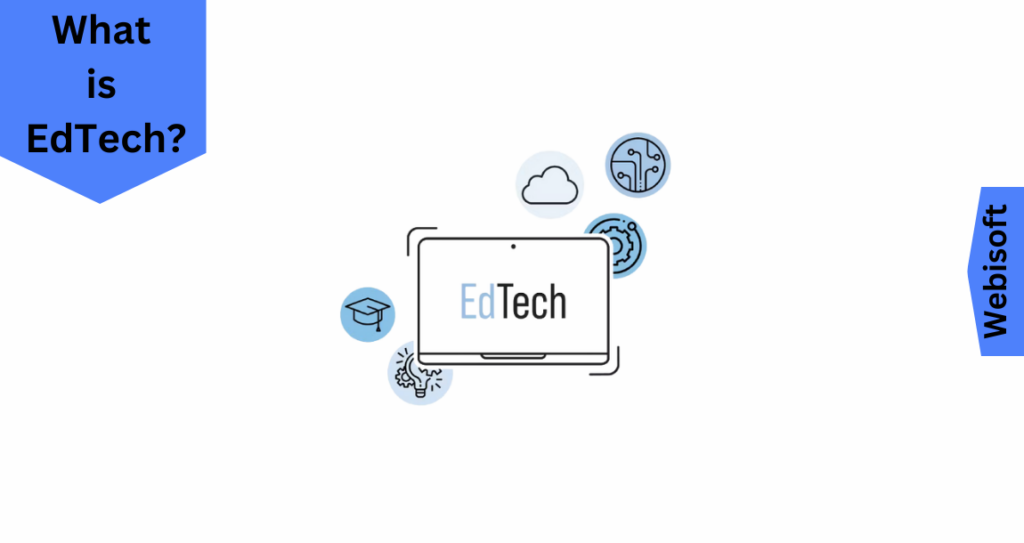
EdTech, short for educational technology, is the practice of integrating digital tools into learning and teaching.
It’s an approach that combines information technology with educational theory to enhance the learning experience.
EdTech is not just about slapping a tablet into a student’s hand. It’s about using technology to create more interactive, engaging, and personalized learning experiences.
This might include online resources, interactive whiteboards, educational apps, and even virtual reality.
The rise of EdTech signals a shift in how education is delivered. It’s a bridge across the digital divide, giving students in remote areas access to high-quality teaching.
It also supports teachers by providing advanced tools and resources to enhance their teaching methods.
The challenges of current education are manifold, but the thoughtful application of EdTech offers promising solutions.
What Does Web3 in EdTech Look Like?

Imagine a classroom that extends beyond four walls, powered by blockchain. That’s Web3 in EdTech. Here, students own their learning experiences and achievements as digital assets.
Learning becomes a journey they control, with credentials that follow them seamlessly through their academic and professional lives.
Teachers can create content that, once on the blockchain, serves learners across the globe. They earn royalties, incentivizing quality and innovation in educational resources.
Students engage with materials on decentralized platforms, ensuring access without traditional barriers.
Interactive learning takes a quantum leap with Web3. Virtual reality has become commonplace, offering immersive experiences that were once the stuff of sci-fi.
Imagine dissecting a digital frog that behaves like a real one or walking through ancient Rome. That’s the potential of Web3 in EdTech.
Where Does Web3 in EdTech Stand Today, and Why Does Web3 Matter?
Today, EdTech is a burgeoning field, yet centralized systems shake it. Schools and universities depend on several platforms for managing courses, grades, and resources. Students often leave their work and data behind when they graduate.
Educators face restrictions on how and where they can share their materials. Enter Web3 EdTech, and the game changes. Decentralization means no single entity controls the system.
Academic records and resources live on the blockchain, accessible anywhere, anytime. Educators publish content directly to the blockchain, reaching a wider audience without intermediaries.
Privacy and security are essential in Web3 education startups. Sensitive student data is safeguarded by cryptographic security, not just a password.
Smart contracts automate processes like enrolment and assessments, reducing administrative burdens and the risk of human error.
Web3 also democratizes education. Learners from all socioeconomic backgrounds access the same quality of education. Geographic and financial barriers diminish. With Web3, education becomes a right, not a privilege.
However, Web3’s role in EdTech is about empowerment. It hands control back to students and educators, enabling a more equitable, efficient, and engaging learning environment.
As we witness the rise of Web3, we’re not just watching technology evolve. We’re seeing the foundation being laid for a smarter, more connected world of education.
How Does Web3 Benefit the EdTech Space?
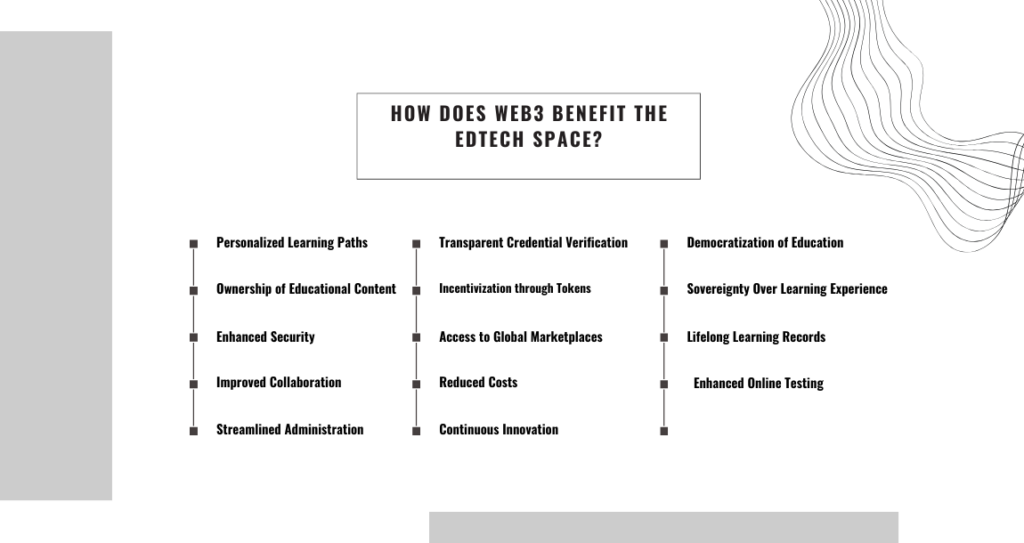
Web3 introduces a new dimension to educational technology, reshaping how students and educators interact with content and each other.
At its core, Web3 in EdTech is about leveraging blockchain and decentralized systems to create a more open, equitable, and user-centric educational experience. Here’s a detailed look at the benefits:
Personalized Learning Paths
Web3 technologies enable the creation of personalized learning experiences. Smart contracts can automate the tailoring of coursework to suit individual student needs and pace.
Ownership of Educational Content
Students and educators have true rights to digital content and data, thanks to blockchain’s secure, immutable records.
Enhanced Security
Decentralized systems reduce the risk of data breaches. Blockchain’s encryption ensures that student records and materials are secure from unauthorized access.
Improved Collaboration
Web3 facilitates collaboration through decentralized platforms. Students can work together across the globe without the need for intermediary platforms.
Streamlined Administration
Blockchain can streamline administrative tasks. Credentialing becomes more efficient with verifiable and immutable records.
Transparent Credential Verification
Employers can instantly verify the authenticity of qualifications through blockchain. This transparency builds trust and speeds up hiring processes.
Incentivization through Tokens
Web3 can incentivize learning through tokenization. Students might earn tokens for achievements, encouraging continued education and engagement.
Access to Global Marketplaces
Educational resources have become more accessible. Teachers can market courses globally, and students can find resources beyond their local context.
Reduced Costs
By eliminating middlemen, Web3 can reduce costs associated with educational content distribution and transaction fees.
Continuous Innovation
Decentralized applications (DApps) in education foster ongoing innovation, with an open-source ethos encouraging constant improvement.
Democratization of Education
Web3 has the potential to democratize education. It can provide access to learning opportunities regardless of a user’s location or background.
Sovereignty Over Learning Experience
Learners have greater control over their educational journey. They can select from numerous subjects and learning styles.
Lifelong Learning Records
Blockchain can maintain a lifelong record of learning achievements. These are portable and recognized across various platforms and institutions.
Enhanced Online Testing
Web3 can make online testing more secure and fair. Blockchain-based systems ensure that tests are tamper-proof and verifiable.
Web3 can potentially revolutionize the EdTech space by creating more personalized, secure, and accessible learning environments.
It puts the power back into the hands of the educational community, allowing for a system that is more aligned with the needs of the 21st-century learner.
The future of education with Web3 looks promising, with endless possibilities for innovation and growth.
How can Web3 in Education Embrace the Move to Ed3?
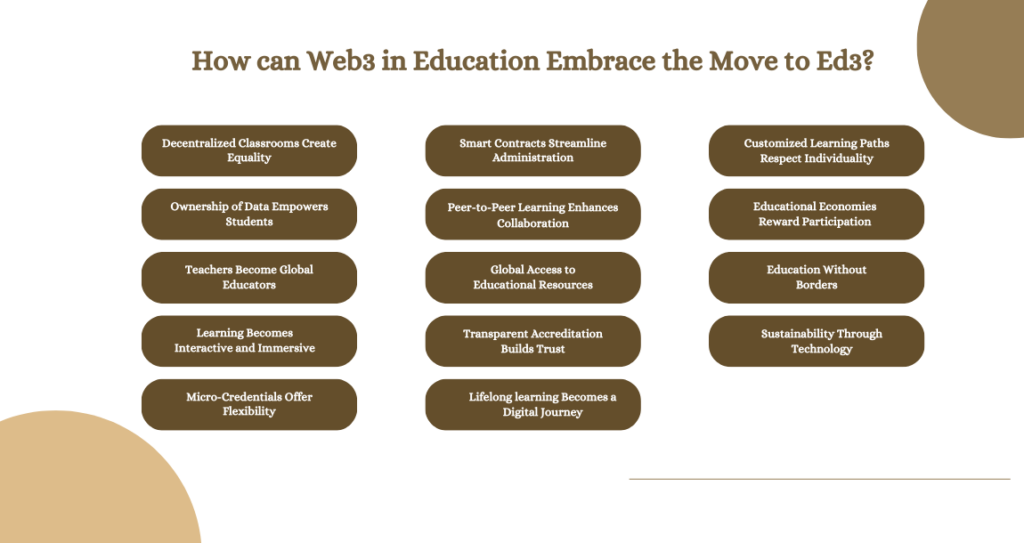
Web3 in education, or Ed3, presents a transformative approach to learning. This shift promises to redefine our educational landscape.
Decentralized Classrooms Create Equality
In the Ed3 world, every student has a seat at the table. Decentralized classrooms offer equal learning opportunities to all. Education is no longer confined to select institutions.
Ownership of Data Empowers Students
Learners in Ed3 have control over their educational data. Blockchain technology ensures that students own their records and achievements securely.
Teachers Become Global Educators
Ed3 enables teachers to share knowledge beyond local classrooms. They reach an international audience, breaking down traditional educational borders.
Learning Becomes Interactive and Immersive
With Ed3, textbooks evolve into interactive experiences. Virtual reality makes learning immersive, engaging students in ways previously unimaginable.
Micro-Credentials Offer Flexibility
Ed3 recognizes diverse learning paths through micro-credentials. These digital badges validate skills and knowledge, offering flexibility in pursuing education.
Smart Contracts Streamline Administration
Ed3 leverages smart contracts to automate routine tasks. Enrollments, grade submissions, and certifications become efficient and error-free.
Peer-to-Peer Learning Enhances Collaboration
In Ed3, peer-to-peer networks facilitate collaborative learning. Students exchange knowledge directly, fostering a community-driven education system.
Global Access to Educational Resources
Ed3 ensures educational resources are accessible worldwide. Students from any region can access high-quality learning materials.
Transparent Accreditation Builds Trust
With Ed3, accreditation processes become transparent. Blockchain verifies credentials, ensuring validity and building trust in the education system.
Lifelong learning Becomes a Digital Journey
Ed3 supports lifelong learning. Digital portfolios track educational journeys, highlighting continuous personal and professional development.
Customized Learning Paths Respect Individuality
Ed3 respects individual learning styles. Customized learning paths cater to different speeds and preferences, making education more personal.
Educational Economies Reward Participation
In Ed3, token economies can reward participation and achievement. Students and educators earn tokens for contributing to the learning environment.
Education Without Borders
Ed3 makes education borderless. Regardless of location, students access the same quality of education, fostering global citizenship.
Sustainability Through Technology
Ed3 embraces sustainable practices. Digital resources reduce the need for physical materials, contributing to environmental conservation.
The move to Ed3 through Web3 in education heralds a new era of inclusivity, innovation, and interconnectivity.
By embracing this move, we unlock a future where education is a shared, secure, and student-centered journey. It’s an exciting time for learners, educators, and institutions to be part of this groundbreaking shift.
How Will Web3 in EdTech Impact Traditional Education?
Web3 is set to make waves in traditional education systems. It promises a shift toward a more interactive, secure, and student-centered approach to learning. Here’s how this impact might unfold:
- Direct Access to Learning Resources With Web3, students can directly access a vast array of learning materials without intermediaries. This direct route simplifies the learning process and can lead to more efficient education.
- Ownership of Academic Records Learners will have complete ownership over their academic records. Blockchain technology ensures they can share their credentials without risk of tampering or loss.
- Customized Learning Experiences Algorithms and smart contracts can create customized learning experiences that adapt to individual learning styles and paces, revolutionizing the one-size-fits-all model of traditional classrooms.
- Global Classroom Participation Web3 enables a global classroom setting. Students worldwide can participate in the same learning environment, breaking down geographical barriers.
- Peer-to-Peer Learning Networks: Students can teach and learn from each other in decentralized networks. Peer-to-peer learning becomes more feasible and effective with Web3 technologies.
- Encrypted security: Personal and academic data are encrypted and secure on the blockchain, reducing the risk of breaches that can plague traditional educational institutions.
- Incentives for Learning Web3 may introduce systems where students earn tokens or digital assets as rewards for academic achievements, motivating them to learn and succeed.
- Decentralized Education Funding Crowdfunding and decentralized finance (DeFi) could provide new avenues for funding education, making it more accessible to diverse populations.
- Autonomy in Learning Path Students gain more autonomy in choosing their learning paths, with a wider range of subjects and courses available outside traditional curricula.
- Interactive and Immersive Learning Technologies like virtual reality (VR) and augmented reality (AR), integrated with Web3, can provide immersive learning experiences that engage students beyond textbooks and tests.
End Note
Web3 is more than a buzzword in education. It’s the key to unlocking a future where learning is personalized, accessible, and secure.
Imagine a world where your achievements follow you seamlessly throughout your life, where classrooms have no borders, and where your educational journey is as unique as you are.
Webisoft is a Web3 development company. It stands at the forefront of this revolution, crafting solutions that connect the power of Web3 to create an educational experience that is both innovative and intuitive.
Whether you’re a student eager to take control of your learning or an institution aiming to streamline your services, Webisoft is your partner in navigating the exciting area of web3 in EdTech.
However, did you find the insights in this article helpful? Your feedback inspires us to improve and provide valuable content continuously.
Frequently Asked Questions
What role do NFTs play in Web3-based education?
NFTs can represent unique educational content, certifications, or achievements, allowing for secure ownership and transfer of educational assets.
Is Web3 in EdTech secure for student data?
Web3 technologies offer robust encryption and decentralization, significantly enhancing the security of student data compared to traditional systems.
How can educators benefit from Web3 in EdTech?
Educators can benefit from greater control over their content, direct engagement with students, and new revenue models through smart contracts.
What challenges does Web3 face in the EdTech industry?
Challenges include technological complexity, scalability, integration with existing systems, and ensuring user-friendly experiences for all ages.
Are there any successful case studies of Web3 in EdTech?
There are emerging examples of Web3 applications in EdTech, such as decentralized learning platforms and blockchain-based credential systems.
